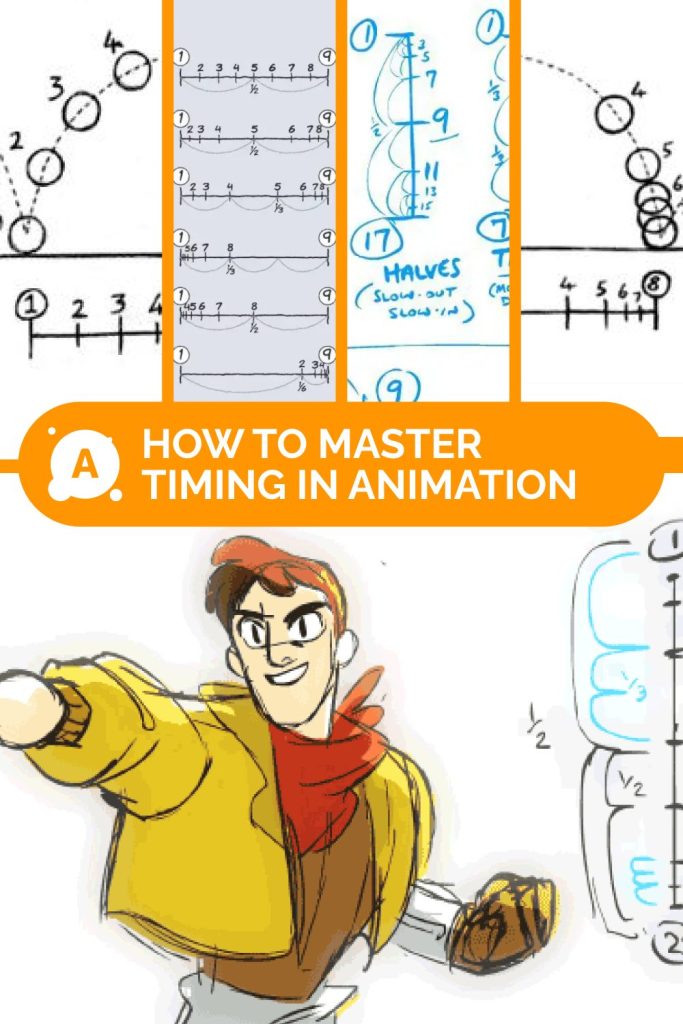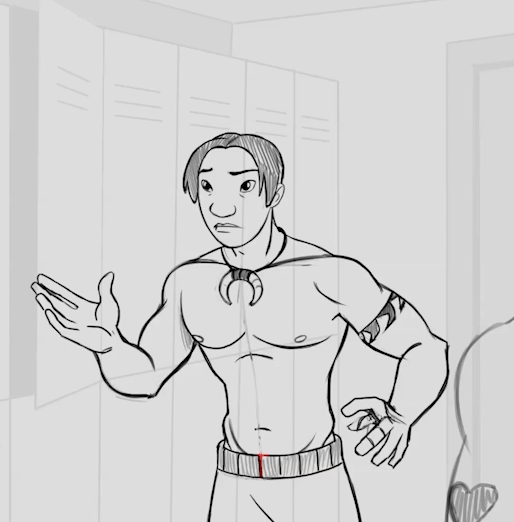The Magic in Animation is the Timing
Animation is pure magic. Every frame tells a unique little story, brought to life by the way things move. But behind this magic lies a secret – one that can take even the most stunning character design and make it feel alive and relatable. That secret is timing.
Timing determines everything: how a character moves, when they pause, how long they hesitate, and how quickly they spring into action. Together, these elements create the illusion of life.

To make this process even more precise, animators often use time charts. But what exactly are time charts, and why might you want to give them a shot? Edward Kurchevsky, a professional 2D animator, shared his thoughts on how timing transforms simple movements into captivating stories. Learn to use timing to make more expressive characters in our Acting in traditional 2D animation course!
What Are Time Charts and Why Are They Useful?
Ever wondered how animators make movements look so smooth and expressive? The secret lies in good planning. Time charts are visual tools that help map out keyframes and in-betweens to ensure every movement is not just beautiful but also makes sense and delivers impact.
As Edward puts it:
«Time charts not only help you stay organized but also allow you to share your vision with other animators. For example, in big projects, the lead animator defines the overall movement dynamics, and assistants polish the frames based on those guidelines.»
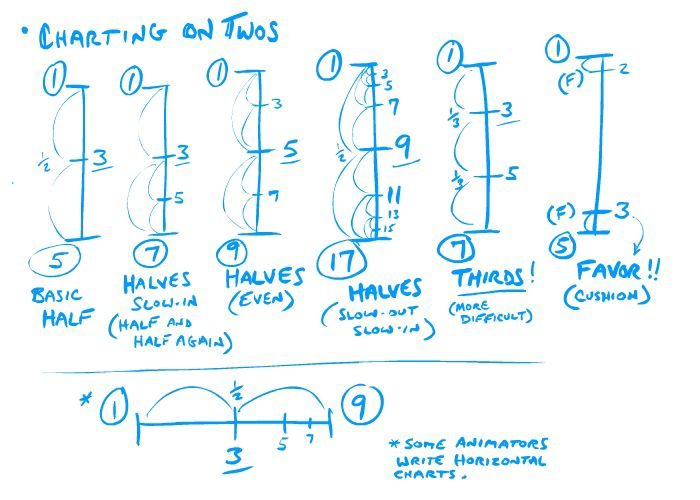
That said, time charts aren’t a one-size-fits-all solution. Edward admits:
«I don’t always use time charts. For me, it’s faster to jump straight into rough animation and see how a scene feels in action.»
Why Timing Matters
When you watch a cartoon, you might not stop to think about why some movements feel exciting while others seem off. The answer? Timing. It sets the rhythm of the animation, draws attention to key moments, and helps viewers connect with the characters.
Edward explains it this way:
«Timing is rhythm. Movements that are too fast can feel confusing, while those that are too slow might seem boring. The magic happens when you find the balance – alternating between fast and slow creates life-like animation.»
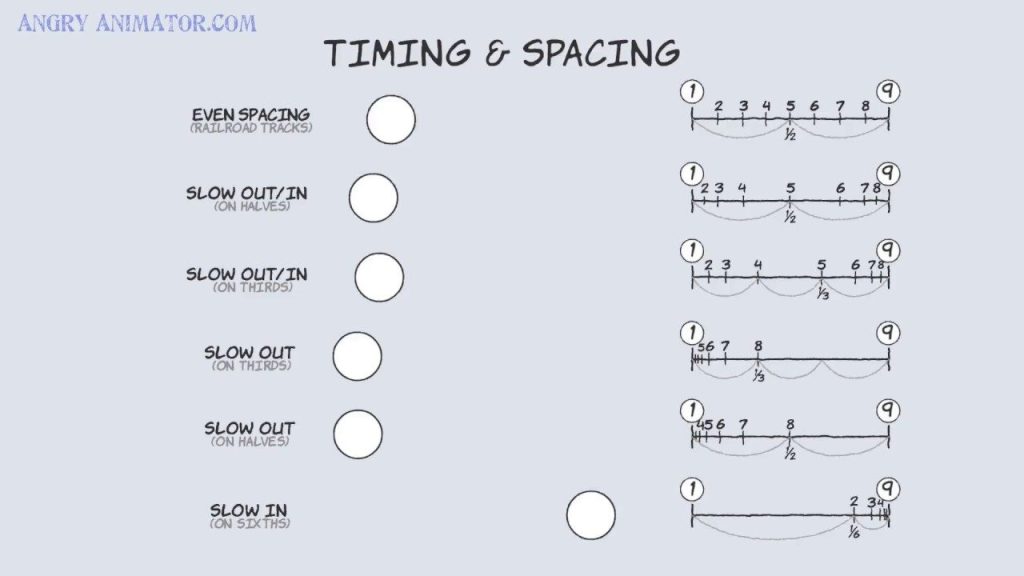
Take a jump, for instance. A slight pause before takeoff builds anticipation, while an evenly paced jump might feel smoother but less dramatic.
Three Approaches to Timing: The Jump Exercise
Practice advanced timing with the bouncing ball exercise in our FREE workshop!
During the workshop, participants explored different approaches to timing using a simple jump animation. The animation itself was straightforward: a character performs a small jump. But changing the timing completely transformed the scene.
The first approach used an even rhythm, where each pose transitioned at the same speed. This method works well for neutral scenes where the focus is on the action itself.
The second approach added a pause before the jump.
«It’s like holding your breath before diving into water, – says Edward. – The pause builds tension, and the sudden jump adds drama.»
The third approach involved slowing the character down mid-air, creating a sense of weightlessness. Edward notes:
«This effect is often used in action scenes to emphasize key moments.»
How Timing Saves Time
One of the biggest challenges in animation is managing your workload. The fewer frames you need to draw, the more time you can dedicate to fine-tuning details. This is where timing becomes a lifesaver. It allows animators to bring scenes to life without adding unnecessary drawings.
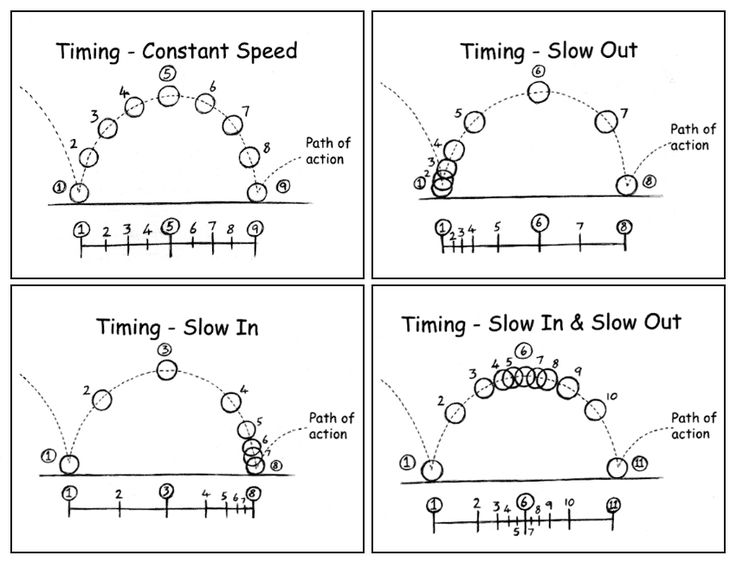
«Animation is about working smart, – Edward says. – A solid understanding of timing lets you avoid extra work. You only add frames where they’re truly needed. Japanese animators are especially skilled at this – their precise timing allows them to achieve stunning results with minimal motion.»
Time Charts: A Handy (but Optional) Tool
While time charts can be incredibly helpful, they aren’t mandatory. Every animator has their own preferred way of working. Edward points out:
«I’m not a huge fan of time charts myself. I like to experiment directly with rough animation. But if you’re collaborating with a team or tackling a complex scene, time charts can be a real game-changer.»
Conclusion
Timing and time charts are essential skills for any animator. Even if you don’t use them in every project, understanding how they work can help you create more expressive, impactful scenes.
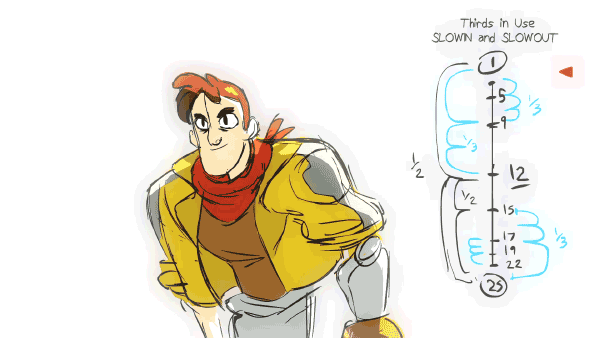
Edward sums it up perfectly:
«Animation isn’t just an art form – it’s a way to tell stories through motion. Timing and time charts are tools that turn movement into pure magic.»
Why not try experimenting with timing in your next project? Even a simple exercise like a jump can open up new creative possibilities. And remember, animation is all about exploring and learning – so don’t be afraid to make mistakes. That’s how the magic truly begins.
